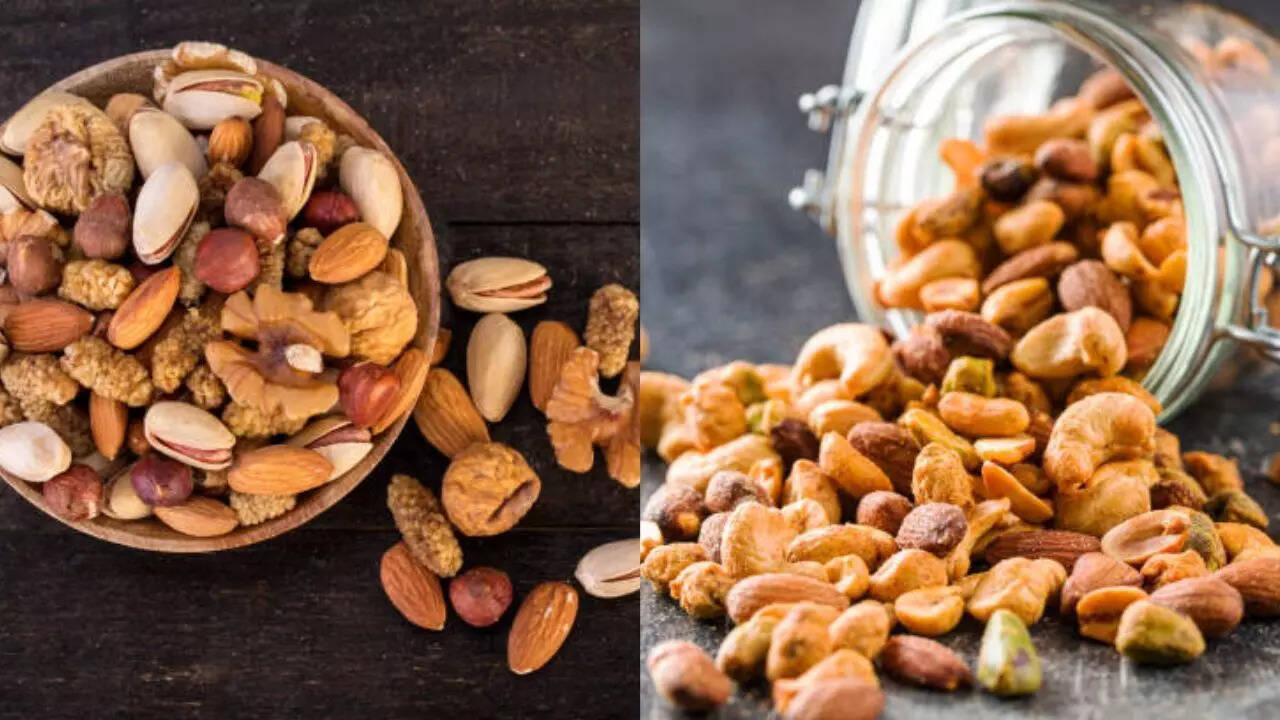
Raw vs. roasted nuts: Which is more nutritious? (Image Credit: ISTOCK)
Nuts are one of the healthy snacks you can eat. They are filled with healthy fat, protein, fiber, vitamins and minerals. But if you have ever picked up a packet of almonds, cashews, or peanuts at the store, you must have seen that they come into two forms – Rao and roasted.
Now, here is the big question: which is healthy? Some people swear raw nuts, claim that they maintain all their natural nutrients. Others argue that the roasted taste enhances and makes the nuts easy to digest. But does Roasting take good things away, or does it make the nut even better?
Nutrient content: Do roasted nuts lose their nutrients?
Raw nuts maintain their natural nutritional structure, including some high levels of vitamins and antioxidants. However, the nuts are exposed to the heat by frying, causing a loss of minor nutrients.
According to the Tufts Health and Nutrition Letter, roasting may cause small disadvantages in heat-sensitive vitamins such as vitamin E and B vitamins, but these cuts are minimal.
Fat content and oxidation: Does frying harm healthy fat?
Nuts are naturally rich in heart-healthy unsaturated fat, which help reduce low cholesterol and reduce the risk of heart disease. However, when the nuts are roasted at high temperatures, they can undergo healthy fat oxidation, which can produce harmful compounds.
A healthline report states that frying nuts at temperatures above 284 ° F (140 ° C) can lead to fat oxidation, which slightly reduces their nutritional value.
Antioxidants: Do they avoid roasting?
Antioxidants help protect our cells from damage caused by free radicals. Nuts such as almonds and walnuts are particularly high in antioxidants, which contribute to overall health and aging prevention.
Rosting may reduce some antioxidants, but the interesting thing is that it can also increase the availability of others. A study published in the Journal of Agriculture and Food Chemistry found that Rosting increased the levels of some antioxidants in peanuts and hazalnuts. This means that while some antioxidants are lost, others become more accessible to the body.
Digestion and absorption: Is it better for your intestine?
Raw nuts contain phytic acid, an antiinutrient that can interfere with the absorption of essential minerals such as iron and zinc. Roasting helps in breaking phytic acid, making the minerals more bioable in the nuts.
According to Medical News Today, roasted nuts are usually easier to digest compared to raw nuts. Frying helps to soften the structure of the heat nuts, making them gentlers in the digestive system. If you experience swelling or discomfort after eating raw nuts, it may be a good idea to switch to roasted people.
A hidden risk in the roasted nut
A risk of roasting is the possible formation of acrylamide, a chemical that is cooked at high temperatures. Studies suggest that acrylamide is a possible carcinogen, which means that high amounts of intake over time can have cancerous properties.
According to the healthline, the formation of acrylamide is more common in nuts which is roasted at much higher temperatures, especially above 300 ° F (150 ° C). Lightly frying on low temperature or dried roasting (fry without oil) can help reduce this risk.
What do experts say?
Nutritionists agree that both raw and roasted nuts can be part of a healthy diet.
A professor of epidemiology and nutrition at Harvard V Chan School of Public Health. Walter Willet insisted that the most important factor is avoiding the nuts that are heavy salty, sugar-coated or roasted in unhealthy oils. He recommends dry-roasted or raw nuts for maximum health benefits.
Similarly, the Tufts Health and Nutrition Letter states that “either a good option – so they are not used to change too much salt or sugar, and until they are used to replace less healthy snack options.”
So, which one should you choose?
Both raw and roasted nuts have their own advantages and disadvantages. If you want to preserve maximum nutrients, raw nuts are a great option. However, if you prefer raw nuts or like a crisp texture, lightly roasted nuts (without salt or oil) can be a healthy option.
To get the best of both the world, consider:
Eating a mixture of raw and lightly roasted nuts.
Choosing dry roasted nuts on oil-roasted varieties.
Fry nuts at home at low temperatures to maintain more nutrients.
Whether you go for raw or roasted nuts, both are excellent sources of nutrition and can be part of a healthy diet. The key is moderation and avoids processed varieties filled with salt, sugar or unhealthy fat. So, enjoy your nuts – raga or roasted – whatever you like them best!
Get the latest news now with diet, health and braking news and top headlines worldwide.



